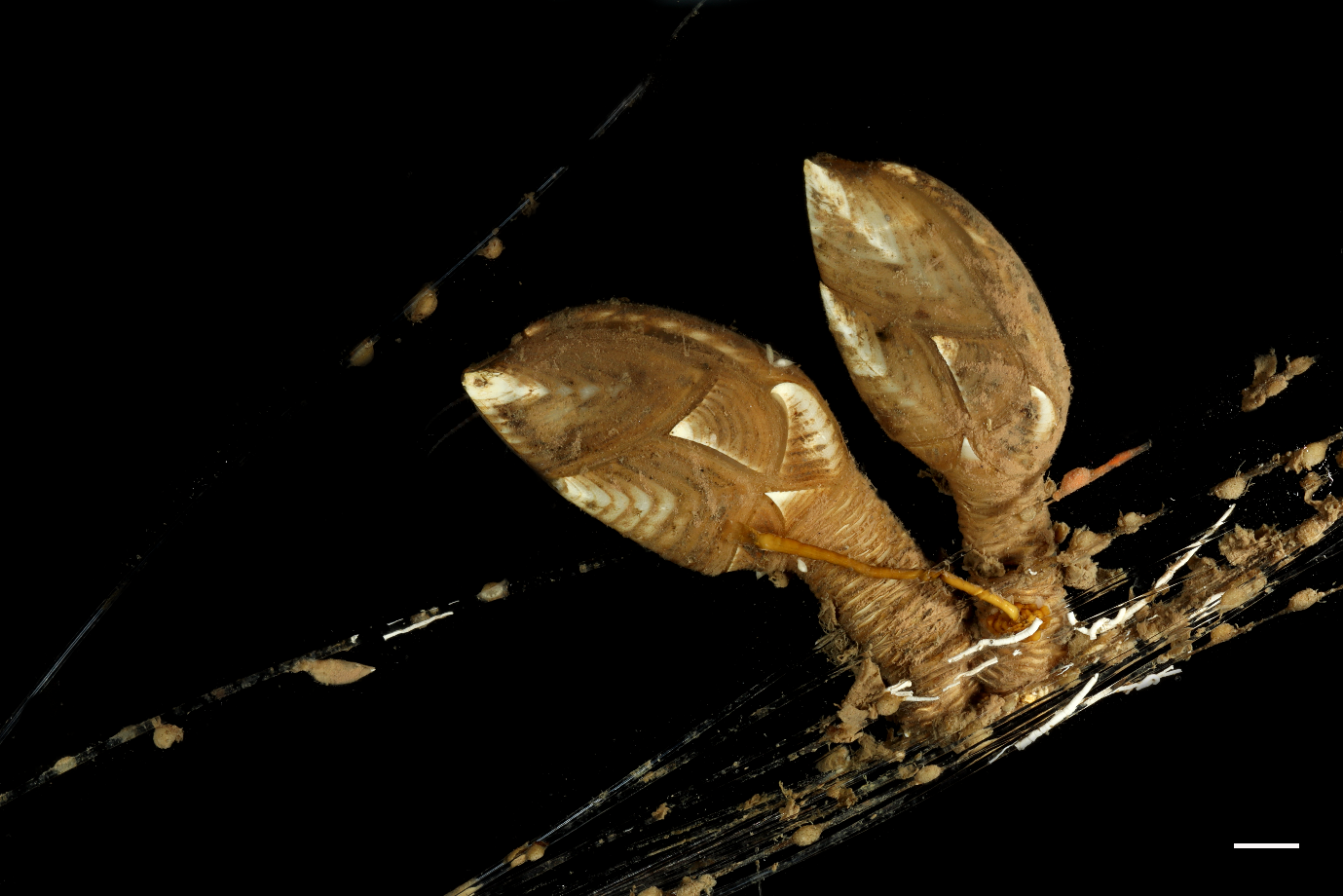Author: Lupita Bribiesca Contreras
Sitting in the control room of the Remotely Operated Vehicle (ROV) “Isis” is always very exciting. You never know what you will find next. We have been diving in the Clarion-Clipperton Zone, an extensive abyssal area with a very high concentration of polymetallic nodules. We are diving at 4,800 m, where it is pitch black and the only light is that made by the ROV. With every blurry shadow you see in the distance your imagination starts going crazy and the excitement in the room skyrockets. On our last dive we spotted a blurry stalk with shadows that sprawled across the seafloor in all shapes and sizes. Our imaginations were running wild. As we got closer we realised it was an old stalk from a glass sponge with two massive goose barnacles and a feather star (free-living form of crinoids). We shouted in excitement and immediately asked the ROV pilots to collect this for us. As usual, it was not an easy task; the stalk was longer than the sample box, so they had to use their incredible skills to coil the strong but flexible spicules forming the glass sponge stalk.
Once the ROV was safely secured on deck, we came with buckets of chilled seawater and carefully placed all the samples in them. Back in the lab we photographed each specimen, including the sponge stalk with the barnacles. These old glass sponge stalks are amazing structures for permanently attached filter-feeding animals, so even after the sponge dies, these structures remain a home to a plethora of different critters. As soon as we placed ours in the aquarium to be photographed, we were in awe at the deep-sea community that we had discovered. The feather star was gone (it was recovered later from the bottom of the biobox), but the sponge stalk was covered with little anemones, white, calcareous, worm tubes belonging to serpulid polychaete worms, a massive scyphozoan polyp (scyphopolyp, that long brown tube on the photo) and many more goose barnacles than we had previously thought. We also found what looks like parasitic copepods attached to the big barnacles, as well as several additional tiny barnacles on both the stalk (peduncle) and the body (capitulum).

Barnacles have a very interesting reproductive system. Most animals that are permanently attached tend to release sperm and eggs for external fertilisation as they are not capable of moving around to find a mate. But barnacles are different. Fertilisation of eggs happen in the mantle of the female in a special cavity where the fertilised eggs are maintained until they hatch. Most species are also hermaphroditic, some species have separate sexes, and others have both hermaphrodites and males. Males are always tiny and are permanently associated to the female. The large specimens we found in this case seem to belong to the species Trianguloscalpellum gigas, a hermaphroditic species where “dwarf” males have been previously reported. Whilst the minuscule barnacles we found attached to those made us wonder if we found dwarf males, they are probably younger hermaphrodites because the males for this species look completely different. Perhaps more detailed analyses once back at the Natural History Museum in London will reveal dwarf males.
This is just one of the weird and wonderful discoveries that we have made on our deep-sea dives. JC241 is soon coming to a close, but the exploration won’t stop there. Analyses in labs across several institutions will likely lead to more revelations and further our understanding of the abyss.